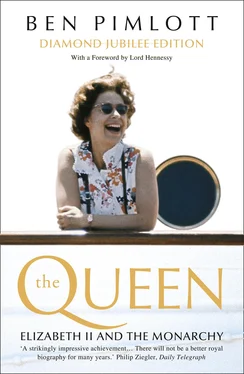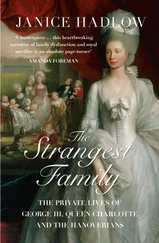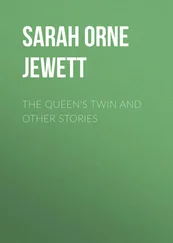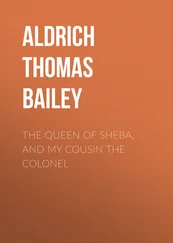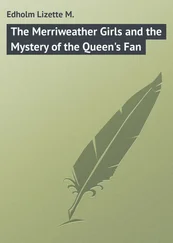Conservatives and Liberals supported the report proposals. The difficulty was on the Government side. Sir Stafford Cripps, moving the acceptance of the report, spoke of the importance of the functions the Princess and Duke had to perform, and of the proof of that importance provided by ‘the intense interest and enthusiasm displayed by all sections of the population at the time of their marriage’. For the Conservatives, Anthony Eden reminded the House that the British ambassador in Washington spent £20,000 a year just on entertaining. Labour left-wingers responded with arguments that were to become staple fare on such occasions. There was talk of the excessive cost of the ‘servants and hangers-on of the Court,’ and of ‘spivs and drones and butterflies’ around the royal couple. A Scottish MP compared the Duke’s £10,000 (‘in addition to a cushy job at the Admiralty’) with the forty shillings a week paid to men blinded in the war. Others suggested that the ‘Scandinavian type’ of monarchy was cheaper and better.
In addition, there was a ‘moderate’ opposition to the CrippsLascelles package – not republicanism, but a belief that (in the words of Maurice Webb, a Select Committee member) the country both wished to retain the Monarchy ‘and desired it to be simple, austere and democratic’. From the Palace’s point of view, such an argument was much more dangerous than that of the Monarchy denigrators, because it struck a genuine chord among the loyal but luxury-denied public; and because it sought, in reasonable tones, to reassert parliamentary control of royal expenditure. The decisive group, however, was the powerful body of Labour MPs who both believed in the Monarchy as a useful device, and felt – with Nye Bevan – that if it was to be done at all, it had to be done in style: in the words of Arthur Greenwood in the debate, ‘with proper dignity’.
It was to this group that the Prime Minister appealed when he spoke in support of a ‘ceremonial’ monarchy – whose value, he implied, derived both from its ability to meet a need for public theatre, and from the exemplary behaviour of the principal actors. In what amounted to a Labour theory of Monarchy, Attlee spoke of the need for ‘simple lives and approachable people’ at the heart of a democracy, and of royal ceremonials as an alternative to the sinister rituals of totalitarianism. The financial details before the House, he suggested, were intended to make such ceremonials and necessary symbolism possible, by giving ‘these young people the facilities for doing the kind of work the general public wanted them to do, of visiting and getting into contact with people in the United Kingdom’ and outside, especially in the Dominions.
Attlee’s advocacy worked, but it failed to supply the all-party support for the Select Committee recommendations which the Palace would have liked. Although no more than thirty-three MPs voted for a left-wing amendment to give no increase in the Civil List at all, an amendment proposed by Webb to limit the couple’s total to £40,000 was defeated only by 291 to 165 – indicating a large dissentient vote among Labour backbenchers, and a significant rate of abstention among ministers. A mere 122 Labour MPs opposed Webb’s amendment, while 106, including eleven ministers, were unaccounted for. In short, if Labour had voted on its own, the Webb reduction to the List payments would have been carried. As it was, the Princess and Duke got their increases in spite of, not because of, the votes of the governing party. 8
‘There was much criticism of the sums proposed but none of the Monarchy as such,’ noted Colville who, with other courtiers, keenly watched the proceedings from the Distinguished Strangers’ Gallery. ‘There was, however, a large school on the Labour backbenches which said the country wanted a “Scandinavian monarchy” with less pageantry and pomp rather than a “ceremonial monarchy”. Cripps spoke admirably and was most effective in debate and Eden was also telling.’ 9Chips Channon blamed the Palace for the tactical error, as he saw it, of failing to invite enough ordinary MPs to the Wedding, which had resulted in a lengthy and embarrassing debate. He concluded that ‘the Royal Family had, I think, a deserved jolt.’ 10
THE FIRST DUTY and ambition of an Heir to the Throne was swiftly accomplished: early in the New Year, Princess Elizabeth became pregnant. The announcement was not made until the summer. In the meantime, the publicity created by the Wedding, combined with the Princess’s new status, helped to increase her list of engagements.
With the marriage, as Ziegler has written, ‘the monarchy gained a new and incomparably brighter focus of attention. The King was in no sense forgotten . . . but in a curious way he was written off. Elizabeth was the future.’ 11The young Princess who signed no documents, made no decisions and uttered few words in public that were her own, continued to have a hypnotic effect wherever she went. As time passed, however, there was a shift in the tone and quality of the adulation. By chance, the marriage had coincided, not just with a crisis, but with the nadir of the nation’s peacetime fortunes. Thereafter, both the economy and living conditions began to improve. It was as if the Wedding had been a good omen; and the Princess – a healthy, composed, pretty, wifely symbol of post-war youth and possibility, with her exquisitely designed couture that made imaginative use of clothing coupons, and her picture-book war-hero husband – stood for a new alternative to drabness.
It was an enjoyable life, and less demanding than the frequency of her newsreel appearances made it appear. Yet it was also – as Colville perceived – a remarkably aimless one, devoid of any content apart from pleasing and being seen. The Princess’s private secretary, an ambitious and high-flying diplomat on secondment, had had a more exciting life than this, and he determined to inject some element of purpose, or at least of understanding, into the repetitive royal round. Once the Wedding was out of the way, he set himself the task of extending his employer’s political education.
He found the Princess easier to instruct than her husband. After going through some paperwork with both of them, he noted that Philip became impatient if his interest was not immediately aroused; and that Elizabeth concentrated better on details. 12In order to advance the Princess’s knowledge, though possibly also to increase his own, he hit on the idea of getting her included in the distribution of Foreign Office telegrams. The less technical ones, he wrote to Lascelles, ‘would give HRH an idea of world affairs which she cannot possibly get from the newspapers.’ 13The Foreign Office consented, as did the King, and the first box of telegrams arrived on January 16th. In addition, rather like Crawfie and Queen Mary before the war, Colville decided to take the Princess on educational trips. Shortly after the arrival of the first FO box, they sat and watched a Foreign Affairs debate in the House of Commons. As the Princess entered, ‘all eyes there turned in her direction,’ according to the press. 14The Princess sat demurely, while the Duke, who accompanied them, made lively comments.
Compensating for the deficiencies of a royal education was an uphill struggle. Though she appeared to read the telegrams, Colville was disappointed to find Princess Elizabeth at first uninterested in politics. However, his attempt to widen her experience continued. In February, he took her to a juvenile court for a day, in the not very optimistic hope of persuading her to improve her knowledge of the social services. 15In this, he achieved more success than he perhaps realized. At any rate, the Princess picked up enough to assist her in one of the most necessary of royal skills, that of talking brightly to distinguished guests about areas that concerned them. When Eleanor Roosevelt stayed at Windsor Castle the same spring during a visit to England for the unveiling of a statue of her husband, she was greatly flattered that the King’s daughter sought her out with a question about homes for young women offenders. She found the Heiress ‘very serious-minded’ and she was impressed ‘that this young Princess was so interested in social problems and how they were being handled’. 16
Читать дальше
